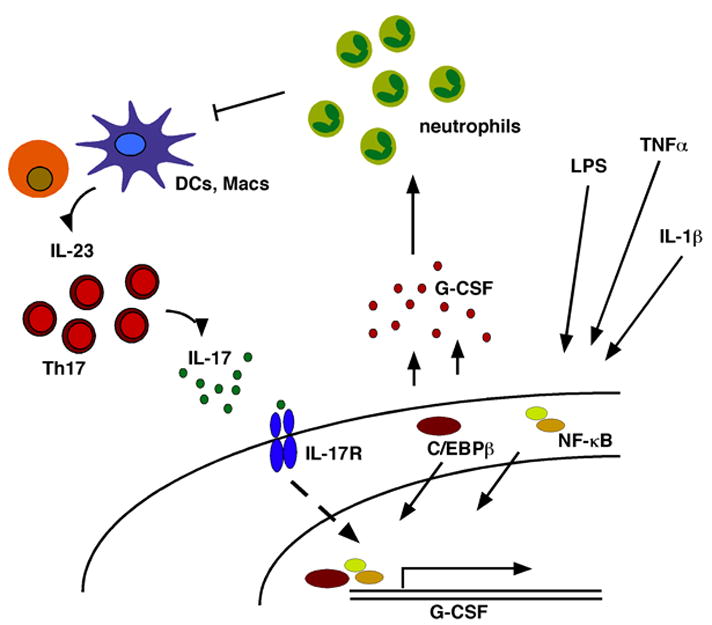Figure 1.

Schematic diagram of pathways regulating G-CSF and neutrophil production. (Right) Inflammatory stimuli in the extracellular microenvironment, such as LPS, TNFα and IL-1β act on target cells (not to scale) to induce G-CSF expression via intracellular signaling molecules such as NF-κB and C/EBPβ. (Left) IL-17 production by Th17 cells activates IL-17R signal transduction, which promotes G-CSF expression. G-CSF can be regulated by transcriptional and post-transcriptional mechanisms. (Center) The increase in G-CSF synthesis stimulates neutrophil production in the bone marrow (anatomical details are not shown). Circulating neutrophils negatively regulate the production of IL-23 and Th17 cells, providing a feedback system to control G-CSF synthesis.
